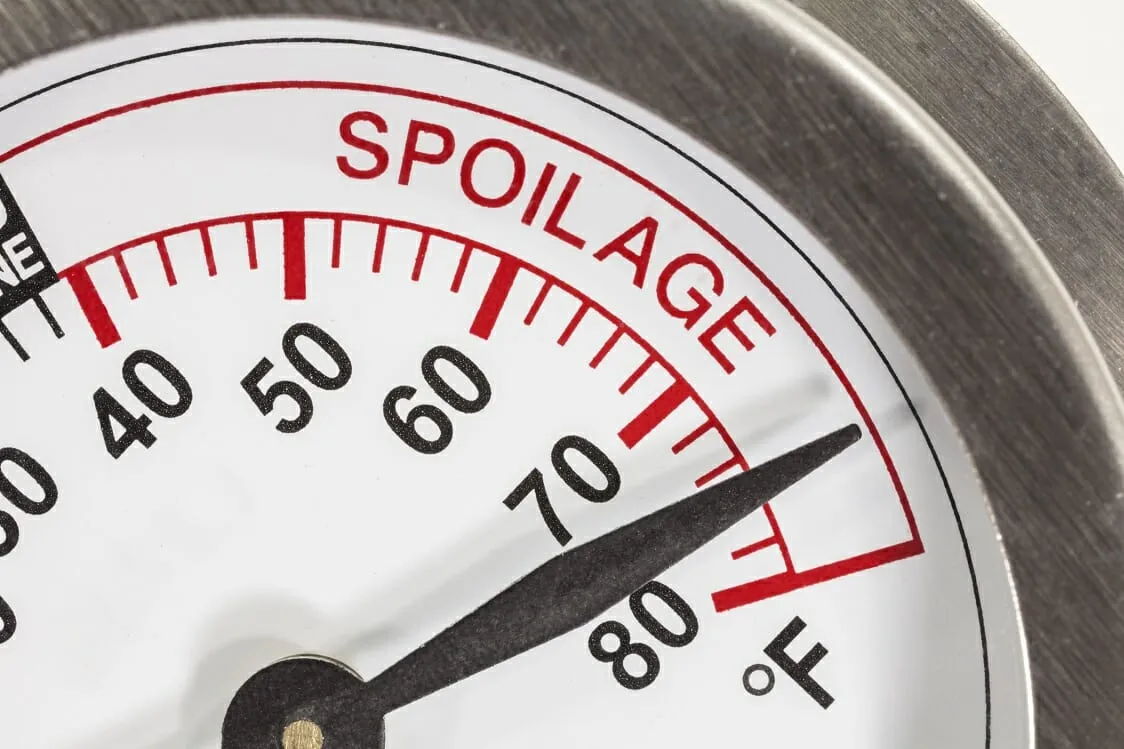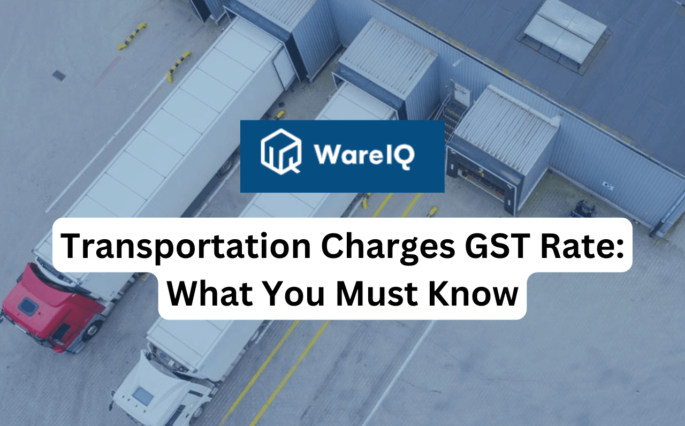Managing Abnormal Spoilage in Logistics


Abnormal Spoilage can be a major issue in the logistics industry, especially when transporting perishable goods. Minimising spoilage is critical for maintaining product quality and reducing financial losses when dealing with food, pharmaceuticals, or other temperature-sensitive items.
Spoilage is material waste or loss that occurs during the manufacturing process. It can also be used to classify badly damaged material used in the production of a product. Spoilage is most commonly used to refer to raw materials with a very short lifespan.
- Types of Spoilage
- Difference between normal spoilage and abnormal spoilage?
- Reasons for Abnormal Spoilage
- How to Calculate Abnormal Spoilage
- How to prevent abnormal Spoilage
- FAQs
- What is abnormal spoilage in logistics?
- Why is minimizing spoilage critical in logistics?
- What is the difference between normal and abnormal spoilage?
- What are the main reasons for abnormal spoilage in logistics?
- How is abnormal spoilage calculated?
- How can abnormal spoilage be prevented in logistics?
- What role does packaging play in reducing spoilage?
- Why is an automated inventory management system beneficial for spoilage prevention?
Types of Spoilage
There are two types of Spilage:
- Normal Spoilage: Normal spoilage is just that—normal—and is to be expected in the normal course of manufacturing or business operations, particularly for companies that manufacture or handle perishable products (such as food and beverages).
- Abnormal Spoilage: Abnormal spoilage is the amount of inventory waste or destruction that exceeds what is expected in normal business operations or production processes. Normal spoilage can be caused by broken machinery or inefficient operations, and it is thought to be at least partially avoidable.
Difference between normal spoilage and abnormal spoilage?
| Aspect | Abnormal Spoilage | Normal Spoilage |
| Nature | Considered avoidable and controllable. | Inevitable and occurs as part of normal business operations. |
| Expense Treatment | Charged to a separate expense account. | Often included as a portion of the cost of goods sold (COGS). |
| Impact on Gross Margin | No impact on gross margin going forward. | May impact gross margin as it is part of the cost of goods sold. |
| Identification Importance | Important for quick identification by investors and users. | Historical data and forecasting are used to account for losses. |
| Capitalization into Inventory | Should not be capitalized into inventory. | Should be capitalized into inventory as an inventoriable cost. |
| Expense Timing | Should be expensed in the period incurred. | Incurred in the normal course of business and capitalized. |
| Determining Abnormality | Unlikely to occur again within the current year. | Considered based on likelihood and historical data. |
| Rule of Thumb | Spoilage is abnormal if unlikely to recur in the current year. | Spoilage can be considered abnormal if history supports it. |
Reasons for Abnormal Spoilage
There are a variety of factors that could result in abnormal spoilage. Some of the main reasons include:
- Improper storage conditions
When goods are stored in less-than-ideal conditions, abnormal spoilage can occur. Keeping goods in a damp environment or where there is some water leakage, for example, could result in mould or other types of water damage. Similarly, if perishables are not stored in temperature-controlled environments, they may spoil.
- Machine breakdown
If your equipment fails unexpectedly, you may experience abnormal spoilage because you will be unprepared to seek alternative options. This could be in the middle of production or while inventory is being stored. For example, a sudden breakdown of your freezer could result in the abnormal spoilage of items that require colder storage.
- Accidents
Accidents, ranging from minor to major ones involving serious injuries, can also result in abnormal spoilage. When an accident occurs, it is common for facilities to halt operations, which can delay the production process and lead to spoilage. Certain types of accidents may have a direct impact on the goods being produced or stored. For example, a worker may drop the package they’re transporting, causing the contents to break.
- Faulty planning
Another major factor that can lead to abnormal spoilage is poor planning. This could be due to improper storage of goods, as well as improper shipping and handling. It could also refer to how raw materials are used in the manufacturing process or how the facility as a whole operates. Regardless, when there is poor planning, the risk of abnormal spoilage increases significantly.
How to Calculate Abnormal Spoilage
The normal spoilage is calculated as the total number of spoiled units, divided by the total units produced, and multiplied by 100. Abnormal spoilage is simply any amount above the calculated normal spoilage.
Normal Spoilage= Total no. of spoiled units/Total number of units produced*100
How to prevent abnormal Spoilage
Abnormal spoilage is spoilage that exceeds the acceptable limit and can be caused by defective machines, low-quality materials, or incompetent machine operators. Abnormal spoilage is charged as incurred expenses or a separate cost that cannot be recovered.
- To reduce spoilage, you must examine your processes throughout the supply chain. The packaging and distribution aspect is an excellent place to focus because it is the most under immediate control and where changes can be made quickly.
- Damage in transit caused by poor packaging, poor handling, or insufficient shelf life can be kept to a minimum.
- Packaging has evolved from simply protecting to ensuring a longer shelf life for fresh produce as it travels from the farm to the wholesaler or processor.
- Reusable crates, for example, are now available with specially designed ventilation holes to ensure product longevity.
- Another tip is to look for retail-ready packaging, which reduces handling and allows products to last longer.
- Team members are invaluable, but they are also human and may make mistakes from time to time. These errors can result in costly replacement costs or the payment for spoiled or lost inventory.
- When you switch to an automated inventory management system, your processes will run faster, more efficiently, and with less human error, allowing you to keep your costs low and your inventory full of food and goods that are in their prime rather than on the verge of spoiling.
- When perishable goods shipments arrive, the clock starts ticking on these items. To ensure that your customers receive fresh items, you must get them unpacked, into the system, and ready to sell as soon as possible.
- You can scan and log new items as they arrive with an automated inventory management system. New inventory can be quickly processed, scanned, and stored so that it remains fresh for as long as possible.
FAQs
What is abnormal spoilage in logistics?
– Abnormal spoilage in logistics refers to inventory waste or destruction that exceeds what is expected in normal business operations or production processes.
Why is minimizing spoilage critical in logistics?
– Minimizing spoilage is crucial for maintaining product quality and reducing financial losses, especially when transporting perishable goods.
What is the difference between normal and abnormal spoilage?
– Normal spoilage is expected in normal business operations, while abnormal spoilage exceeds what is considered normal and may be avoidable or controllable.
What are the main reasons for abnormal spoilage in logistics?
– Factors include improper storage conditions, machine breakdowns, accidents, and faulty planning throughout the supply chain.
How is abnormal spoilage calculated?
– Abnormal spoilage is calculated as any amount above the calculated normal spoilage. Normal spoilage is calculated as the total spoiled units divided by the total units produced, multiplied by 100.
How can abnormal spoilage be prevented in logistics?
– Prevention involves examining processes throughout the supply chain, focusing on packaging and distribution, using retail-ready packaging, and implementing automated inventory management systems.
What role does packaging play in reducing spoilage?
– Packaging with features like ventilation holes and retail-ready packaging can minimize damage in transit and ensure a longer shelf life for perishable goods.
Why is an automated inventory management system beneficial for spoilage prevention?
– Automated systems run faster, more efficiently, and with less human error, reducing the chances of costly replacement costs or payments for spoiled inventory.








